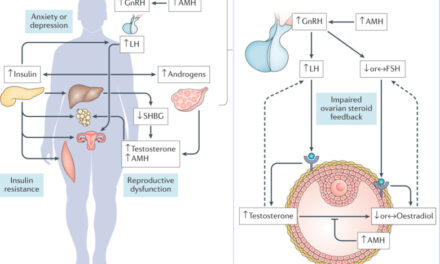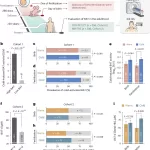Research Challenges Long-Held Belief, Unveils Circadian Rhythm’s Role in Ovarian Timing
The mystery surrounding the timing of women’s monthly ovarian cycles has long puzzled scientists, with theories ranging from lunar influence to internal biological clocks. Now, a groundbreaking study published in the journal Science Advances by a team of reproductive researchers from France and the U.S. challenges conventional wisdom, suggesting that the circadian rhythm plays a predominant role in regulating ovarian cycles.
For centuries, speculation abounded regarding the potential link between the lunar cycle and women’s menstrual cycles. Charles Darwin proposed a connection, hypothesizing that ancient humans living near the seashore synchronized their cycles with the tides. Previous research hinted at temporary synchronization between menstrual cycles and lunar cycles, fueling the debate further.
However, the latest findings provide compelling evidence to the contrary. Led by chronobiologist Charlotte Förster of Würzburg, the research team conducted a comprehensive analysis of over 3,000 women’s medical records from Europe and North America, encompassing data from 27,000 ovarian cycles. By tracking the onset of each cycle, the researchers sought to unravel the underlying mechanism governing ovarian timing.
Contrary to expectations, the study revealed minimal correlation between the timing of ovarian cycles and lunar phases. Instead, the researchers observed a phenomenon they termed “phase jumps,” akin to the body’s response to jet lag, where disruptions in cycle timing prompt a gradual adjustment to restore the original rhythm over several months.
“These phase jumps suggest that the circadian rhythm, rather than the lunar cycle, exerts primary control over ovarian cycling,” explained René Ecochard, lead author of the study.
The circadian rhythm, known for orchestrating a myriad of physiological and behavioral changes over a 24-hour cycle, emerges as a key player in regulating ovarian function. While the circadian rhythm’s influence on sleep patterns is well-documented, its role in governing ovarian cycles underscores its complexity and significance in human biology.
The study marks a significant advancement in understanding the intricate interplay between biological rhythms and reproductive health. By shedding light on the circadian basis of ovarian cycling, the findings pave the way for future research aimed at elucidating the mechanisms underlying women’s reproductive physiology.
“Our findings challenge longstanding beliefs and offer new insights into the fundamental processes driving women’s reproductive cycles,” said Förster, emphasizing the need for continued exploration in this burgeoning field.
As researchers delve deeper into the circadian regulation of ovarian function, the study opens new avenues for investigating the intricate interplay between biological rhythms and women’s health. With further research, the circadian rhythm may emerge as a promising target for therapeutic interventions aimed at optimizing reproductive health and fertility.
The study, titled “Evidence that the woman’s ovarian cycle is driven by an internal circamonthly timing system,” represents a significant step forward in unraveling the mysteries of women’s reproductive biology, heralding a new era of discovery and innovation in the field.












